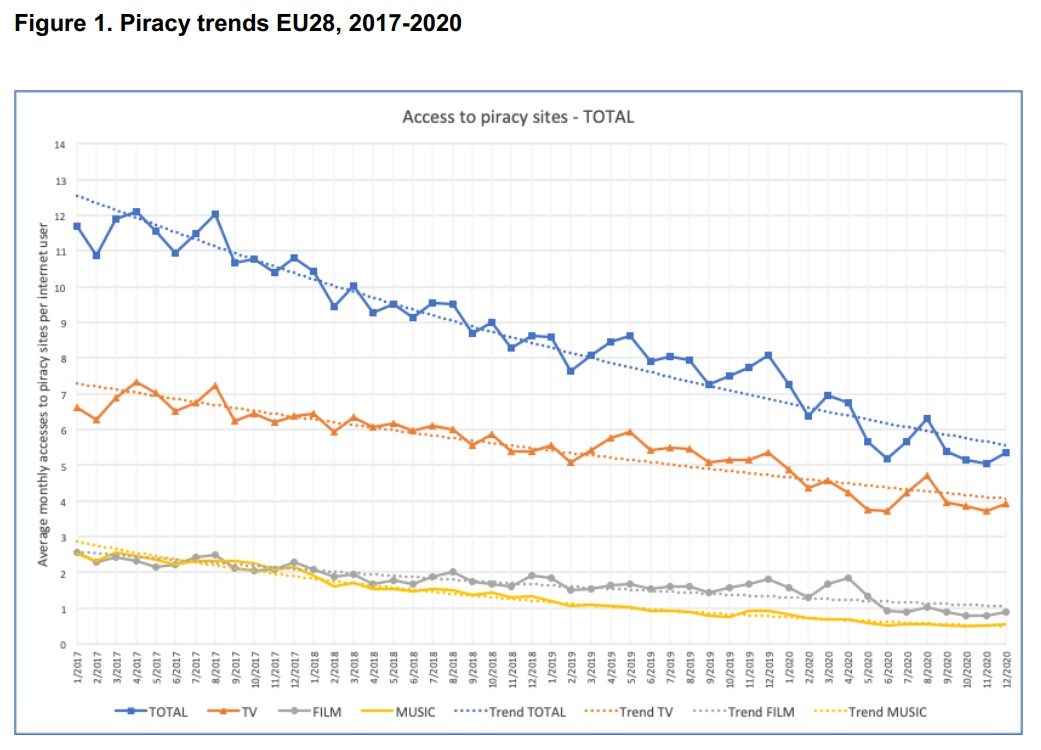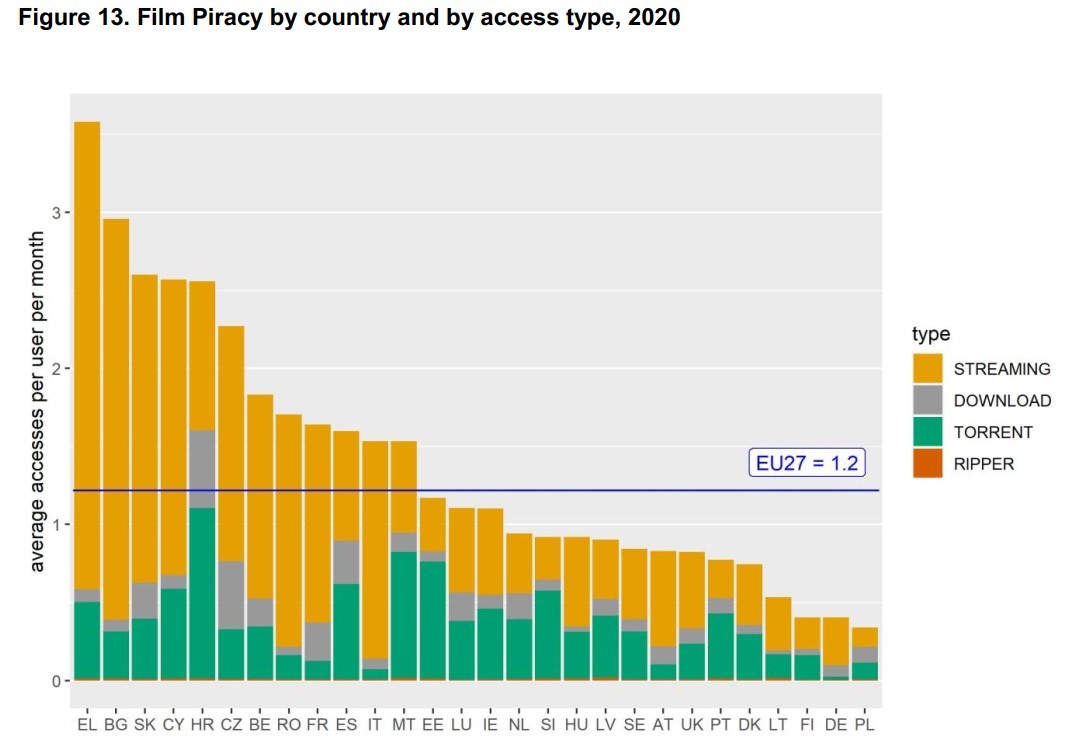 The European Union Intellectual Property Office (EUIPO) regularly conducts studies to see how piracy evolves over time.
The European Union Intellectual Property Office (EUIPO) regularly conducts studies to see how piracy evolves over time.
These studies help the public to understand local piracy trends and can be used as input for future policy decisions.
This week, EUIPO published the latest version of the annual online copyright infringement report. The study looks at the period between 2017 and 2020 which includes the start of the Covid pandemic, where piracy reportedly spiked.
Some copyright holders feared that this piracy boom would prove to have lasting effects. However, this fear may be unjustified, as EU visits to pirate sites have become less and less prevalent.
EUIPO’s research is in large parts based on data from piracy tracking MUSO. It maps piracy consumption patterns across all EU member states and the UK. This data includes visits to unauthorized movie, TV and music sites.
Going Down
One of the main conclusions of the latest study is that traffic to pirate sites continues to decline across the board. This is calculated based on the average number of monthly visits per Internet user.
The chart below shows that the piracy numbers roughly halved between 2017 and 2020. This trend is visible for all content categories and most pronounced for music, which dropped by more than 80% during this time period.

These data also reveal that TV piracy is by far the most common. This could in part be due to the recurring nature of TV shows. At the end of 2020, roughly 70% of all pirate site visits were TV-related. The film and music categories are good for 20% and 10% respectively.
COVID Boom?
When the pandemic first started we spotted an increase in piracy. However, that effect wasn’t permanent. The EU report confirms our earlier findings that the COVID piracy boost was transitory.

As shown above, there was a piracy increase during the first weeks of the pandemic. This effect was limited to TV content, however, and the downward trend continued later in the year.
Streaming is King
Another trend that continues is the switch to streaming sites. The days when torrent and direct download sites dominated the piracy landscape are a decade behind us. Streaming is now good for more than 80% of all piracy across the EU.
There are regional differences in the use of piracy sources, however. In Estonia, Hungary, Malta, Portugal and Slovenia, torrent sites still get more traffic than streaming sites. In Germany, on the other hand, only a tiny fraction of all pirates are torrenting.
The piracy rates are not the same across the EU either. As shown below, piracy is most prevalent in Greece, Bulgaria and Slovakia. At the other side of the spectrum, we find Poland and Germany.

Income and Availability
There are a lot of factors that help to explain these differences. The EU researchers looked into some of these and were able to draw some interesting conclusions.
The income level of a country has a significant impact on piracy rates. Low per capita income and a high degree of income inequality are associated with increased consumption of pirated content.
“Among the socio-economic factors, the level of income per capita and the extent of inequality seem to have the greatest impact on consumption of pirated content: high per capita income and a low degree of income inequality are associated with lower levels of illicit consumption,” the report finds.
Another factor explaining regional differences is the availability of legal options and people’s awareness of those. More legal availability and awareness helps to decrease piracy, the researchers found.
An Oulier and a Massive Caveat
The EU report helps to understand how piracy is developing over time. Most of the trends continue in the same direction but we also spotted an outlier that’s worth a mention.
In recent years the proportion of mobile piracy traffic ‘caught up’ with desktop traffic. However, toward the end of 2020 desktop traffic pulled away again. The study doesn’t explain this, but it may in part be due to the fact that most people work behind a desktop at home during the pandemic.

There is also a major caveat as the research is limited to pirate sites. The researchers acknowledge this as they mention that live sports streaming is not included, but the gap is broader than that.
The study really only covers a part of the broader piracy landscape. The focus on web traffic means that apps, streaming devices, and IPTV services are not included either. Perhaps that’s where some mobile users are going?
This caveat may also shed a different light on the piracy drop, as these untracked piracy channels have grown explosively in recent years. According to some, these streaming tools are the largest piracy threat at the moment.
As such, it’s entirely possible that overall piracy levels didn’t drop, or could even have grown.





